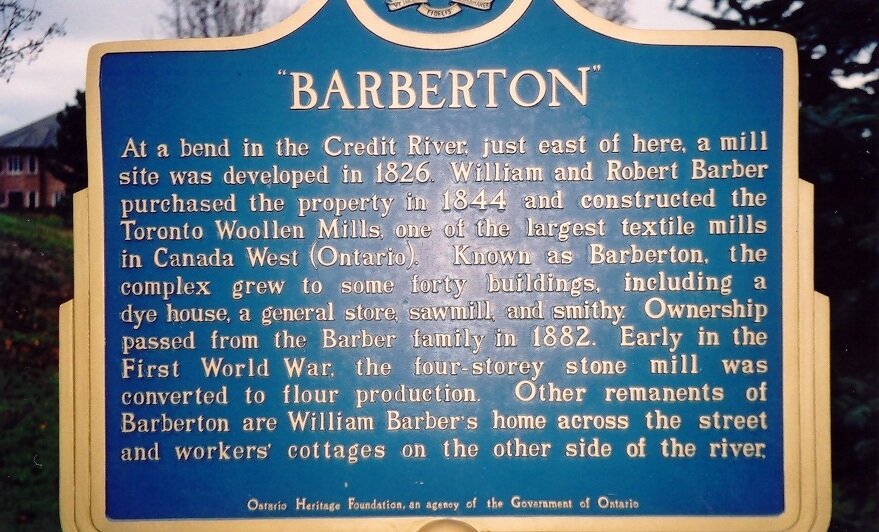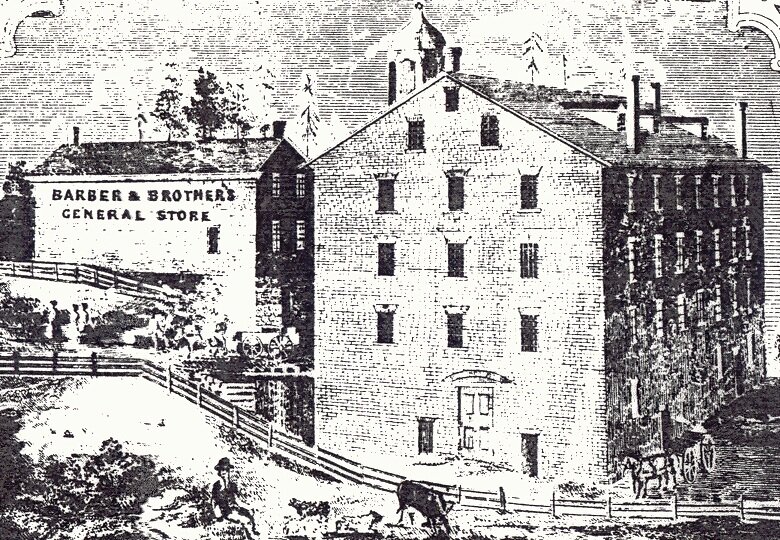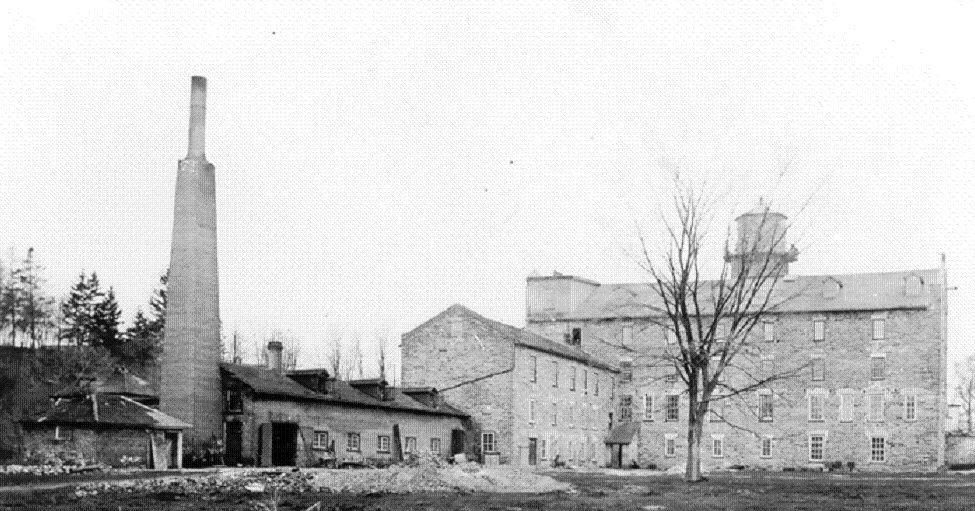The history of Mississauga's Barbertown Road
/Barberton - from the 1877 Historical Atlas of Peel County
Continuing our theme of late in looking at early industries brings us to Barbertown Road, south of Streetsville. Barbertown Road is an early mill-access route and Credit River crossing point. A trip down Barbertown Road today will bring you to the ADM Milling Company, formerly the Toronto Woollen Mills and operated by the Barber brothers – hence the name of Barbertown Road, albeit a misspelling of their own community reference of Barberton.
William Comfort operated the first mill on this site in 1826, which was purchased by the Barber brothers in 1843. In 1852, the Barbers built a large four-storey stone woollen mill, which burned in 1861. Three months later the mill was rebuilt and back into production. Much of this building survives today. By 1870, the mill complex, known as the Toronto Woollen Mills, was the fourth largest textile mill in Ontario.
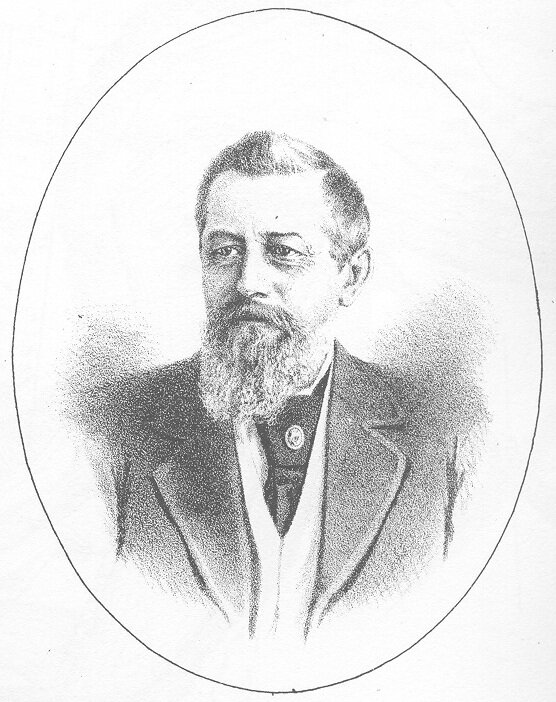
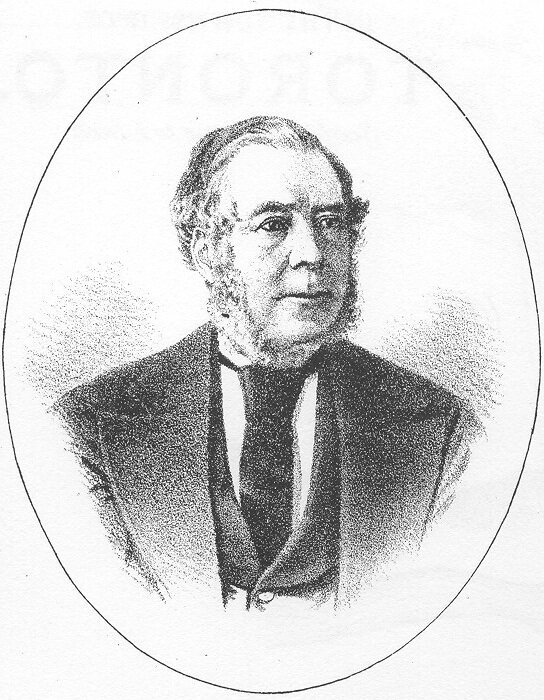
The Barber brothers consisted of William, James, Joseph Jr., and Robert, who had come to Canada from Ireland in 1822, settling first near Dundas, and later in Georgetown. The Barber brothers are acknowledged with being leaders in the industrial factory system in Canada.
The Barbers built 43 buildings for mill workers and their families, and the small community, dubbed Barberton, began to develop around the Barbers’ mill site. Entire families often relied on the mill for their income and livelihood. Barney McCusker operated the blacksmith shop and Augustus Redding ran a tailor shop. Mr. J.G. Owens operated the two-storey general store (presently the ADM Milling Company site office). The chief teamster, Henry Hetherington, made two trips a day to Port Credit with finished goods and returned with raw materials. Moses and Mary Strong ran a boarding house where weekly dances were held. The mill complex and surrounding village also included a machine shop, a blacksmith shop, a carpenter’s shop, a company store, a tailor shop, a small brickyard, and a cooperage.
Toronto Woollen Mills from the 1877 Historical Atlas of Peel County
William and Robert Barber and Bennet Franklin, their partner and brother-in-law, had large homes built for themselves, on the west side of the Credit River, while the majority of their employees lived on the east side. The Barbers were very active in local religious, economic and political circles.
Joseph Barber Jr. and Bennet Franklin retired in 1869. James bought the Georgetown mill, while William and Robert continued the woollen operation, which flourished for another decade. The business went into receivership in 1882, and the Canadian Bank of Commerce took over the property.
Toronto Woollen Mills from 1859 Tremaine Map of Peel County
After 1887, several companies intermittently attempted to run a textile operation out of the former Barber mill, notably the Streetsville Woollen Company and Oriental Textiles Limited. Shortly after the First World War, the mill was converted to flour production. W.H. McCarthy purchased the flour operation from Sterling Milling Company in 1931. When McCarthy Milling began operation it was the largest water-powered mill in Ontario. ADM Milling (Archer-Daniels-Midland) acquired the mill in 1991 and the four-storey structure continues to operate today.
ADM Milling 2002
William Barber House c1875
Over time, most of Barberton itself has disappeared. William Barber’s home, built c1862 (formerly the Barber House Restaurant), survives and is being repurposed. Two former workers’ houses also survive. The old mill bridge (built circa 1898, and now a pedestrian crossing of the river) and Barbertown Road itself are but a reflection of this once vibrant industrial community.
Meanwhile, the Credit River meanders on its way, winding around the historic mill complex.
